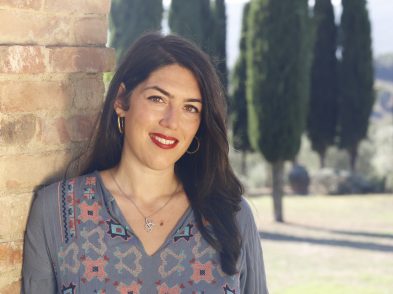With a major exhibition currently at New York’s Museum of Biblical Art, an awareness campaign under way to restore the Baptistery and the imminent reopening of the Opera del Duomo museum this October after extensive renovation, there’s a wave of energy emanating from Florence’s best-loved monumental square. The Florentine spoke with Franco Lucchesi, president of Opera del Duomo, the association founded in 1296 to oversee the cathedral’s construction and that continues to protect and promote the Duomo and its monuments today.

Helen Farrell: Everybody is talking about the Duomo because of your fundraising campaign, Abbraccia il Battistero (Embrace the Baptistery), launched with supermarket chain Unicoop Firenze. How did this collaboration come about?
Franco Lucchesi: It came about as a reaction by Unicoop upon seeing a compliant I had made regarding the lack of response from Florence’s leading business people. I had asked for their support for supplementary restoration work on the Baptistery and no replies were forthcoming. Unicoop came up with the idea, which was a challenge as no campaign of this magnitude has ever been launched before in Florence. Rather than fundraising, this campaign is almost crowdfunding done in a certain way, an intelligent way. Unicoop, an economic powerhouse in Florence, could have just written a cheque and donated directly to the restoration, but instead it decided to involve its members.
HF: What do the members gain from their involvement?
FL: Those who donate more than 10 euro will be listed in a donors’ book, which will be kept in the Opera del Duomo’s archives in perpetuity. This book is a new thing for the Opera del Duomo: donors have been documented as part of the financial ledgers since 1296, but never in a separate book, not until now. Alas, we can’t do what our predecessors did, sculpting the names on the marble of the Duomo, but we can inscribe the names in this book instead. Plus, there are educational visits to the Baptistery for our donors: so far, more than 1,000 people have ‘embraced’ the tours in groups of 15.
HF: How is the campaign going so far?
FL: More than 6,000 people have donated. Moreover, Unicoop will make a donation in addition to the funds raised. Other initiatives are also taking place, such as fundraising dinners and an event held on the Ponte Vecchio. It’s all about involving the Florentines, as the Baptistery is perhaps the monument that they cherish the most: it’s part of their very identity and history.
HF: Non-Florentines are also very fond of the Baptistery, too, of course.
FL: It’s true, but I think they appreciate it for its beauty or as a building that contains art. I always mention Le Corbusier’s comment when he came to Florence for a conference at the Palazzo Vecchio in 1963. Le Corbusier went up to the Baptistery, touched it, turned to Giovanni Michelucci and said, ‘It’s the most beautiful building in the world.’ For Florentines, the Baptistery means something more than beauty. Up until 1930, it’s where they were baptised. It’s part of their skin and lifeblood.
HF: I just got back from New York and very much enjoyed the exhibition at the Museum of Biblical Art (MOBIA).
FL: You saw it? The exhibition layout and setup are particularly beautiful and intelligent, in terms of lighting and space. For us, it was a wonderful surprise because I’d visited the MOBIA last year and I wasn’t 100 percent sure due to the small dimensions of the space, although I loved the location. The way the works have been displayed, however, do not seem cramped. In fact, the works distinguish themselves in the space. The surprise for New York has been to see these sculptures, which stand more than two metres tall, and works by Donatello, which had never previously been to New York.
HF: I imagine it wasn’t easy to organise, nor to transport all those impressive sculptures stateside.
FL: No, but it was facilitated by the fact that the works were effectively in storage while the Opera del Duomo museum was closed for renovation. What’s exceptional about the MOBIA exhibition is that it will never be repeated again: 30 works altogether from Florence Cathedral in New York. As soon as our museum reopens, these sculptures will be back in their home and we won’t move them again.
HF: What can we expect from the new museum?
FL: It will be very different to your traditional museum. Usually, sculpture museums are displayed in an ordered way, well lit, in rooms, with information boards. We decided not to go down that path. Monsignor Timothy Verdon, the director and ideator of the new museum, chose to recontextualise the works. When they were made, these works weren’t isolated and separated from one another: they were part of the monument. They had a function within the monument; they were part of the catechism. Taking a sculpture from the bell tower and putting it in a room by itself is a way to display its artistic beauty, but in the process you destroy its meaning. The new museum will have a 36-metre-long corridor with, on one side, the two panels in the order that you see them as you walk around the campanile and, on the other side, the statues, also in the corresponding order. Plus, there’s a huge room, bigger than the Sistine Chapel, in which we’ve placed the three doors of the Baptistry. When we reopen, there will be two doors; the third is being restored and will be added in two years’ time.
The Museo dell’Opera del Duomo is expected to reopen on October 29, 2015. For more information on how to donate to the Opera del Duomo, email opera@operaduomo.firenze.it
Sculpture in the Age of Donatello
Renaissance Masterpieces from Florence Cathedral
Museum of Biblical Art
1865 Broadway at 61st Street, New York








